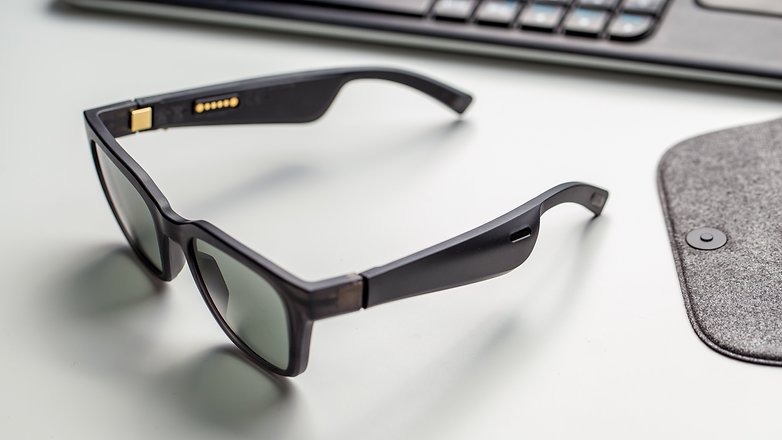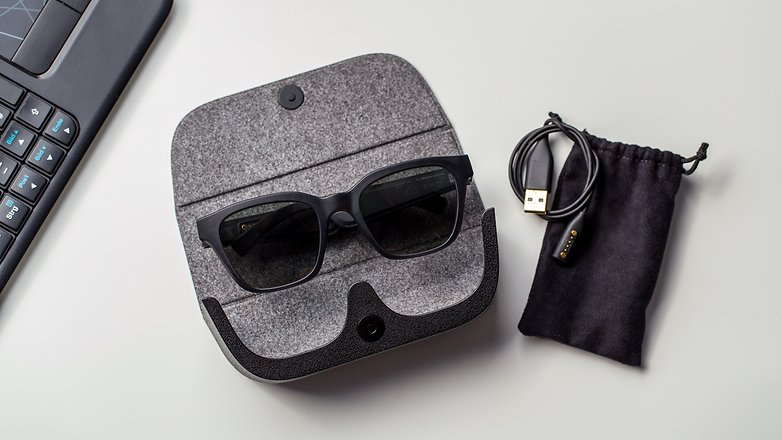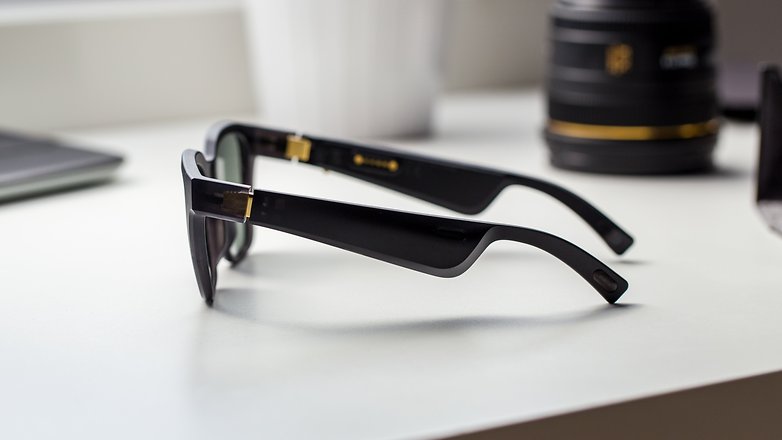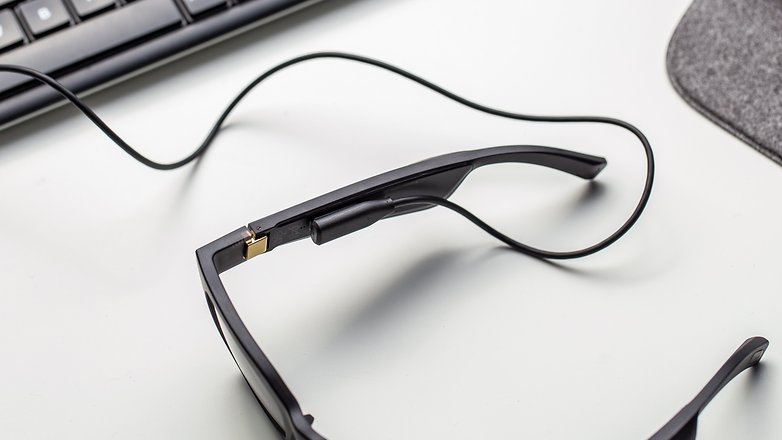Bose Frames Alto review: don't throw away your headphones yet


Audio giant Bose, perhaps best known these days for its over-ear noise-canceling headphones, has made a pair of audio sunglasses. They're called the Bose Frames, and they come in two different versions. I tried out the Frames Alto to see what they're all about.
Good
- Comfortable to wear
- Audio quality for calls and podcasts
- Build-quality
Bad
- Sound lacks bass
- Bose AR not ready

Bose Frames Alto release date and price
The Bose Frames Alto are available now for $199. There's also a Rondo version of the Frames, which have more rounded lenses and a smaller fit, also for $199. Bose stops short of calling these "men's" and "women's", but the two frame-styles are being marketed, at the very least, in that direction.
Both pairs of Bose Frames are available in one color, matte black. The review unit I tested had the standard dark lenses in them but you can buy mirrored lenses in polarized silver ($29.95) or non-polarized gradient blue ($19.95) from the Bose website.
So for two-hundred bucks, you're getting a product that cost at least as much as a decent pair of sunglasses and a decent pair of earbuds combined. Can the Bose Frames replace either? Let's find out.
Well-made in a classic design
The design of the Bose Frames Alto are what the company is calling "Modern Classic". I call it, "Ray-Ban Wayfarer-Esque". That said, I do like the design. For a product that has been made by what is essentially an audio company - and one not exactly known for its slick design - I'm impressed at how close the Frames Alto get to passing as regular sunglasses, especially when worn by people with long enough hair to cover up the rather chunky temples. They're also comfortable to wear, despite weighing 44.7 grams.

Build quality is excellent. The stainless steel hinges, finished in gold, are rock solid. The rims are made of nylon, and sit comfortably on the bridge of your nose. Aside from the added girth of the temples, the only real giveaway that these are more complicated than regular shades is the gold button on the bottom of the right temple, and the metal charging plates on the inside.
The Frames Alto come in an imitation leather case, with enough room for your charging cable. It's strudy and offers enough protection for your high-tech sunglasses. No complaints here. The lenses are scratch and shatter-resistant but nobody is going to be chucking a $200 pair of sunglasses into a bag unprotected.

The connection between the Bose Frames and your smartphone is done via Bluetooth. You can use the Bose Connect app, but it not necessary. Combined with the Trusted Devices features in Android, I never had any problems on the connectivity side and the initial setup was fast. Bose says the range is nine meters. I am very rarely that far away from my smartphone.
Bose AR desperately needs developers
Thanks to the Bose Connect app, the Frames Alto support Bose AR. They are calling this a first-of-its-kind audio augmented reality platform. In principle, it sounds promising, bringing digital assistant-type functions to your ears that enhance the world around you.
In practice, Bose AR is virtually unusable at this stage of its development. The only app currently available is called Golfshot - a virtual caddy with support for more than 45,000 gold courses worldwide. Not being much of a golfer myself, I was not able to test this during my review process. The Bose Connect app does advertise that two more apps are coming soon: Audiojack, an audio-movie service, and Otocast, a kind of virtual tour guide. We'll have to wait and see how this one pans out in the future for Bose AR.

The Find My Buds feature in the Bose Connect app does not support the Frames Alto. To be perfectly honest, there's little in the app that is useful for this product. Battery life is displayed there, but you can also see that in the Connected devices menu on Android.
Don't be expecting to throw away your earbuds
The Bose Frames feature miniaturized speakers in the bulky part of each temple. They are positioned to project sound directly into your ear canal, but allow you to hear your surroundings just as you normally would. Bose calls this an open-ear design. The best way I can come up with to describe what the Frames offer is that it is like a kind of soundtrack to your journey.
Music playback
Sound quality when it comes to music streaming is the weakest of the use cases with the Frames. It's not bad, though, by any stretch of the imagination. Music sounds clear and crisp and there are decent dynamics present, but the Frames lack bass in bucketloads. If you are into hip hop or house or any genre that uses bass or drums as a core element, your favorite tunes will sound flat and fragile on the Bose Frames.

The Frames Alto are not a replacement for headphones then, absolutely not. Even a pair of in-ear earbuds that cost a quarter of the price of these will sound better for music playback. But that's fine, because the Frames are not really about delivering top-quality audio quality for listening to music.
Podcasts
When it comes to listening to podcasts or audiobooks, the Bose Frames shine. Voices remain clear even at maximum volume, with little-to-no distortion. The open-ear design also makes the Frames ideal for cycling, because you can still hear traffic and the world around you, with the clear sound of spoken word in your ear. I was surprised by how well this worked. I usually wear active noise-canceling headphones on my commute, but I enjoyed the bend of natural environmental noise and audio that the Frames delivered.
Calls, Siri and Google Assistant
You can also use the Bose Frames for making calls. Despite the fact that this takes the creepiness of looking like you are talking to yourself to a whole new level, the Frames are great for making phone calls. Audio is clear on the wearer's end and the microphone is good enough to deliver loud and clear on the caller's end. Top marks.

One downside of the design is that there is quite a bit of audio bleed when you get these things cranked up. It's worse with music, which is another reason why I do not really rate these for listening to the latest IDLES album (great band) or similar. I'm always wary of audio spill, especially on the subway, and would be too self-conscious to listen to music in an enclosed space with these. Even in the office, Julius, who sits next to me but much further away than you would sit next to someone on a train or bus, could hear audio spill when I had the volume at around 70 percent.
Just enough battery life
Charging is done via USB. The connect is magnetic and strong. You get a fat USB to custom connector cable in the box, but it's really short. In theory, you could wear the Frame Alto whilst charging them. The frame design and charging cable connection leaves more than enough room to wear them comfortably whilst hooked up. You will, however, look ridiculous of course.

Bose claims there's enough battery life in these to last for up to 3.5 hours of streaming music playback. That will be sufficient for most, especially given the two-hour charging time from zero to 100 percent. For commuting, exercising or walking your dog, you should have plenty of juice. Battery life was true to these claims during my testing period.
A perfect fit, about once per day
I was skeptical about the Bose Frame Alto at first, but I must admit they did grow on me. The Alto design is definitely a little large for my face, and I'd probably go for the Rondo's if I was going to buy these for myself. Even so, they are very comfortable to wear and listening to podcasts whilst cycling was an enjoyable experience.
The price remains a bit of a sticking point. At $200, the Bose Frames are very much a luxury tech gadget that has very few use cases to justify the price. I would not want to use the Frames as a replacement for my regular sunglasses or my regular headphones, not for listening to music at least. But there are certain situations where the Frames make total sense.

For a first attempt at bringing something completely new to the market, you have to applaud Bose for getting a lot right here. I'll certainly be keeping a close eye on what happens with AR Core in the future. There's potential there if the right developers can be brought on board.




















